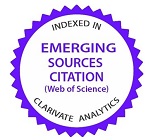Abstract
An abdominal aortic aneurysm (AAA) is a degenerative pathology that affects the infrarenal segment of the aorta, leading to its progressive dilatation and eventually rupture. The infrarenal segment is involved in 80% of the aortic aneurisms, and represents alone 30% of all aneurysms. The natural history of the disease is characterized by the progressive increase of the aortic diameter associated with proportionally higher risk of rupture, particularly for cases with diameter greater than 5.5 cm. In case of rupture the mortality rate is very high, independently from the endovascular or surgical treatment. The most important risk factors are older age, smoking, hypertension, dyslipidemia, and family history of AAA. The most frequent form is "atherosclerotic", but infectious, collagen disease-related, immune dysregulation-related, and post-traumatic AAA have also been described. Albeit multiple pathogenetic hypotheses have been proposed, the role of metallo-proteinases in the degeneration of the aortic wall seem to play a central role. Early detection of AAA is crucial for the identification and treatment before the onset of potentially life-threatening complications. Moreover, the individual risk stratification is fundamental for the clinical management and follow-up. The growing knowledge about the pathophysiology of AAA has the potential to lead to significant translational advances. The challenge for the next years is to employ bioinformatic and genetic models, also based on artificial intelligence and machine learning approach, to develop novel screening methods and to stratify individuals at higher-risk or in the early stages of AAA.
Recommended Citation
Accarino, Giulio; Giordano, Antonio Nicola; Falcone, Martina; Celano, Adriana; Vassallo, Maria Giovanna; Fornino, Giovanni; Bracale, Umberto Marcello; Vecchione, Carmine; and Galasso, Gennaro
(2022)
"Abdominal aortic aneurysm: natural history, pathophysiology and translational perspectives,"
Translational Medicine @ UniSa: Vol. 24
:
Iss.
2
, Article 6.
Available at:
https://doi.org/10.37825/2239-9747.1037
Creative Commons License

This work is licensed under a Creative Commons Attribution-Noncommercial-No Derivative Works 4.0 License.
Included in
Health Communication Commons, Life Sciences Commons, Medicine and Health Sciences Commons




